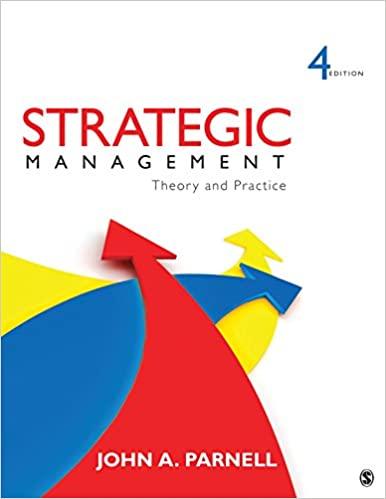Question
Acting as Tom Becker, Manager of Capital Planning, you must make a recommendation about allocation of the final $7 million in capital funds for 2007.
Acting as Tom Becker, Manager of Capital Planning, you must make a recommendation about allocation of the final $7 million in capital funds for 2007.
EAS and Lighting--by the multiple criteria explained in the case. The assumptions for each model are at the top of each page. Those cells marked in green are assumptions you might wish to vary for a sensitivity analysis.
For example, on the EAS - Full Line Stores (Sales) sheet, the default assumption is that adopting EAS will reduce shrinkage by 10%. But what if the reduction is 30%? How does changing this value affect the NPV or IRR?
Or, the cost of tags is assumed to be $1,564,000 for the current year, given current sales. But what if vendors pre-apply tags to more of the goods? Then, your cost would be lower. Would a reduction in cost of 1% or 5% make any substantial difference to the bottom line?
You could approach a sensitivity analysis in various ways, changing one assumption at a time. Or, you could show a scenario in which several assumptions reasonably change together, and evaluate that scenario.
For the assignment:
1. EAS
a. Pick a level of shrinkage decline that makes sense, and briefly explain your reasoning. Keep this assumption throughout your analyses. display a table showing the NPV from each model keeping all the other default assumptions, only changing the level of shrinkage decline.
b. Choose one other assumption to vary for EAS. Keeping your chosen level of shrinkage, change that other assumption in all models, and enter the new NPVs into your table.
c. Evaluate the following scenario: The EAS system is highly effective, but publicity about your anti-theft efforts makes some shoppers concerned. The shrink rate without EAS grows 0.2% per year and reduction in shrink is 40%, but sales growth per year is 1% lower than the default assumption (that is, 5% for full-line stores and 8% for hardware stores). Leave all other assumptions at their default levels. Enter the new NPVs into your table.
2. Lighting
a. Adjust the installation cost per store according to your perspective on such chain-wide rollouts. Do you think costs might be higher, perhaps because of trying to install new lighting in so many stores in a short period of time? Or do you think costs might be lower, perhaps because Murphy could buy the lighting fixtures in bulk? Briefly explain your reasoning. Keep this assumption throughout your analyses. Report the NPV from the lighting model keeping all the other default assumptions, only changing the cost of installation.
b. Consider the possibility that new technologies and deregulation of the electricity industry could reduce costs per kwh. At what value of cost per kwh would the lighting project become negative NPV, given your assumptions in part (a)? Do you think this much reduction is realistic in the next 10 years?
b. Consider regional differences in hardware stores. Suppose one-half of stores are in areas that use a high level of air conditioning (3000 hours per year per store) and one-half of stores are in areas that use a low level of air conditioning (1000 hours per year per store). Since the average hours per store are the same as in (a), the overall NPV will not change. But what does this suggest about the priority for new lighting in stores? What other information might you want on any assumption to make a better decision?
Your submission should include the following elements in a short document:
- Reasoning for part 1a.
- Table of NPVs from parts 1a, 1b, and 1c
- Reasoning for part 2a.
- NPV for part 2a.
- Breakeven value of electricity cost assumption for part 2b.
- Declaration of any vital, new information on any assumption you would find helpful before having to make your recommendation.
- Recommendation for how to allocate $7M in 2007. Justify your recommendation by referring to the sensitivity analysis and scenario analysis. One or two paragraphs is sufficient.
Step by Step Solution
There are 3 Steps involved in it
Step: 1

Get Instant Access to Expert-Tailored Solutions
See step-by-step solutions with expert insights and AI powered tools for academic success
Step: 2

Step: 3

Ace Your Homework with AI
Get the answers you need in no time with our AI-driven, step-by-step assistance
Get Started


